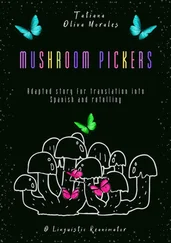And what did she say this time? "I just drove across the bridge." When you associate the strength and confidence with those auditory and visual stimuli, driving across a bridge becomes just another human activity, the same as the experience that the rest of you have had driving across bridges your whole life. This is also a way of testing our work to find out if it is adequately future-paced. We know what she looked like when she had a phobic response. If the same phobic response comes up, we know somehow the integration didn't happen. We'll find out what happened and re-do it. Her response was "Oh, driving across the bridge." Earlier, with Linda, we were talking about achoring the new response to a cue from the environment. Here we're testing and we're bridging or future-pacing at the same time.
Woman: Can you do this with yourself?
Yes, with two qualifications. Tomorrow we're going to teach a pattern called "reframing" which teaches you how to establish an internal communication system with some sophistication and subtlety. If you have such an internal communication system, you can always check internally to make sure that all parts of you are congruent. If you get a "go-ahead," of course you can do it by yourself. If there's some hesitation, reframing gives you a way of getting congruence, internal agreement.
Another precaution is that you get a really good anchor for a powerful, positive "blast-out" experience, so that if you begin to collapse back into the old unpleasant feelings, you can bring yourself out. Feeling more unpleasantness will not help you in this at all. I had a powerful anchor. Make sure you have one for yourself. I would recommend that you do it with somebody else if you have a very intense phobic response. It isn't that difficult, and it obviously doesn't take that long. Find somebody else, if only to operate the bail-out anchor if you begin to go back into the unpleasantness. You can go slightly into the phobic response and say to your friend "Look at what I look like now, and what I'm breathing like now. If you see that again, squeeze my hand." That would be adequate. You can run the rest of it yourself.
Woman: Can you do this with children?
Children don't seem to have that many phobias. For those who do, this will work fine. Whatever you do with kids, I recommend that you sneak up on it. A friend of mine had a nine-year-old kid who was a lousy speller. I said "Look at this list of ten spelling words." The kid looked at it, and I said "Now close your eyes and tell me what they are—not how to spell them." He had some difficulty doing that; he didn't have well-developed visualization. However, I said "Remember the Wookie in Star Wars? Do you remember when the Wookie opened his mouth and showed his teeth like this?" And he went "Oh, yeah!" and then he was visualizing immediately. I had him print the words out in the Wookie's mouth. There's always some experience somewhere in a person's personal history that has the requisite qualities you need. If you combine that experience with the task that you are trying to do— and especially with children, make a game out of it—there is no problem. "What do you think the Wookie would see if he were watching you go through that thing with your dad?" That's another way of getting the dissociation.
Children are really fast. As an adult you are a lot slower than a child. You are less fluid in your states of consciousness. The primary tool that we offer people who work with children is to use anchoring as a way of stabilizing what you are trying to work on, to slow the kid down enough so that you can cope. Because kids are really fast.
Woman: Why two steps of dissociation?
You don't need it. That's just a guarantee; it's insurance that she doesn't collapse back into the old feelings. If we had only dissociated her one step, if she collapsed she would collapse right back into the old experience, and it would be very difficult to get her back out. By doing it in two steps, if she begins to collapse, she will collapse into the first step and it's easier to get back out. You can tell whether she is up above or back down here by the changes in posture and skin color and breathing, etc. Knowing that, if I see her collapse from two to one, I give a squeeze here, or I say "Now let her feel the old feelings over there.
You watch from up here." Those are ways of insuring that she doesn't just re-experience the bad feelings.
Woman: You asked Tammy to take the feeling and find a picture of herself at a younger age. What if she can't find one?
That's a statement about the therapist, not the client. It should be taken as a comment about what the therapist is doing, indicating that the therapist should change his behavior and do it differently.
Let me answer your question in this way. I don't believe that Tammy actually had the experience that she watched herself go through. She may or may not have; I don't know. But it is irrelevant. Once a very well-known therapist was visiting with us, and we received an emergency referral, a suicidal woman. The psychiatrist had given up, saying "Here, would you please take this woman over? I'm out of choices." Since this famous therapist was staying with us, we thought it would be an unprecedented opportunity to demonstrate some of the uses of hypnosis Erickson had taught us. Because for that therapist, at that point in his evolution, hypnosis was a dirty word. He thought it was "manipulative." And we told him "There are ways in which Ericksonianhypnosis is far less manipulative than any insight, conscious-mind therapy we have ever run across. Let us demonstrate with this woman."
So we began to work with this woman. The visiting therapist was sitting there watching and listening. About ten minutes into the session, he got a revelation. It was obvious. I said "Do you have something you want us to do?" I had never had a chance to watch this therapist work live before. He took over and started going "Blood... stairway... childhood, younger brother... mother cries... screams." He developed this incredible fantasy, which he then essentially "sold" to this woman. At first the woman would go "Gee, I don't remember anything like that." Finally the woman went "Uuuuhhhh! That's it! I must have done it!" very much like a family reconstruction, if you've ever been through one of those with Virginia Satir. Suddenly the woman made all these internal connections, and the visiting therapist did all this therapy about this past experience and the woman changed dramatically. Her behavior changed dramatically, and she stayed changed, too. She was a continuing client of ours.
Now, when she came back in two weeks, we couldn't resist. We induced a somnambulistic trance, and established an anchor for amnesia so that we could erase anything we did during that session— because she was doing fine and we didn't want to interfere. We just wanted to check and find out what had happened. We asked her unconscious mind if in fact the experience described by the therapist during the session—or anything approximating it—had ever occurred. The answer was unequivocally "No." However, that is no different than what just happened here. If the experience that Tammy generated has all the elements of whatever the original experience or set of experiences was, it will serve as a metaphor which will beas effective as an actual, factual, historical representation. And from my sensory experience I can guarantee that it was effective.
Woman: What I still don't understand is what youdo if the client is stuck because she has an expectation of getting a picture of a childhood incident, and now she's sitting there doing this and she can't get a picture.
OK, that's the same choice point as the congruent "I don't know" that we talked about earlier. Ask her to guess, make it up, lie, fantasize; it doesn't matter.
Читать дальше











